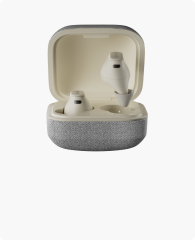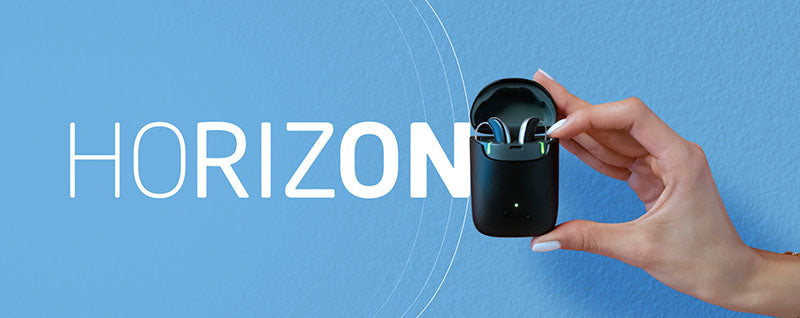Imagine sitting in a busy café with friends, but instead of enjoying the conversation, all the background noise blends together and the words seem jumbled. This is often what life feels like for someone with Auditory Processing Disorder (APD). Unlike traditional hearing loss, APD doesn't necessarily mean you can't hear sounds—it means your brain struggles to make sense of them.
That's why many people look for hearing aids for auditory processing disorder. The right device won't just amplify sound; it can make voices clearer, reduce distracting noise, and give you the confidence to connect with others again. In this guide, I'll walk you through what APD is, how hearing aids can help, and which features and styles might work best for you.
🚀 Navigate This Post
- ➤ Part 1: What is Auditory Processing Disorder (APD)?
- ➤ Part 2: Do Hearing Aids Help with APD?
- ➤ Part 3: Best Hearing Aid Features for APD
- ➤ Part 4: Different Hearing Aid Styles for APD
- ➤ Part 5: Practical Tips for APD Patients Using Hearing Aids
- ➤ Part 6: Recommended Hearing Aids for APD
- ➤ Conclusion
- ➤ Frequently Asked Questions
You may also be interested in:
- Infrasound and Your Health: What Scientists Know About Its Effects
- Best Hearing Aids to Reduce Background Noise for Seniors
- Pulsatile Tinnitus: What It Is and How to Stop That Pulsing in Your Ear Naturally
Part 1: What is Auditory Processing Disorder (APD)?
Auditory Processing Disorder is a condition where the ears may hear normally, but the brain has difficulty interpreting the sounds. For example, someone with APD might hear a sentence perfectly but struggle to distinguish between similar words like "bat" and "cat."
Common symptoms include:
- Trouble understanding speech in noisy environments
- Difficulty following multi-step instructions
- Asking people to repeat themselves often
Because APD involves how the brain processes sounds, it's different from typical hearing loss. If you want to understand how sound travels through the brain, you may find this resource helpful: What part of the brain controls hearing.

APD affects both children and adults, and while it can be frustrating, assistive technology like hearing aids is often an important part of improving communication.
Part 2: Do Hearing Aids Help with APD?
You might wonder—if APD is about the brain and not the ears, can hearing aids really help? The answer is yes, but with some conditions. Instead of simply boosting volume, hearing aids designed for APD focus on improving clarity.
For example, low gain hearing aids for auditory processing disorder provide just enough amplification to highlight speech without overwhelming the listener with unnecessary loudness. This subtle support makes it easier for the brain to process words.
Another key benefit is background noise control. By reducing environmental distractions, hearing aids allow people with APD to focus on the speaker. For a deeper look into noise reduction technology, see: Best hearing aids to reduce background noise.

In short, the best devices for APD aren't the ones that make everything louder—they're the ones that make the right sounds stand out.
Part 3: Best Hearing Aid Features for APD
When looking for the best hearing aids for auditory processing disorder, it's less about style and more about features that support the brain's ability to process sound. Some of the most important include:
-
Low Gain Amplification
– Ideal for APD since the goal is clarity, not loudness.
– These devices give just enough boost for speech without distorting the soundscape.
– Adjustability is crucial, which is why personalized fitting matters. (See: Hearing aids adjustment) -
Background Noise Reduction
– Helps cut out chatter in restaurants, classrooms, or busy offices so speech is easier to understand. -
Directional Microphones
– Allow the user to focus on the speaker directly in front of them, which is extremely useful in noisy environments. -
Bluetooth Connectivity
– Enables direct streaming from smartphones, TVs, or laptops, which can make speech and learning materials much clearer.
– Learn more here: Connect hearing aids to Bluetooth.
By combining these features, hearing aids become more than sound amplifiers—they become processing aids that give the brain the best possible input to work with.
Part 4: Different Hearing Aid Styles for APD
While features matter most for APD, the style of hearing aid can also make a difference depending on comfort, lifestyle, and listening needs. Here are the main options:
- Completely-in-the-Canal (CIC): Discreet, small, but may lack advanced noise reduction. (CIC hearing aids)
- In-the-Canal (ITC): Slightly larger, allows more features while still subtle. (ITC hearing aids)
- In-the-Ear (ITE): Bigger size offers easier handling and stronger performance. (ITE hearing aids)
- Behind-the-Ear (BTE): Great for flexibility and advanced technology like noise cancellation. (BTE hearing aids)
- Receiver-in-Canal (RIC): A balance between comfort and performance, popular among modern users. (RIC hearing aids)
Each type can be adapted for APD, but the best choice depends on the individual's environment and daily challenges.

Part 5: Practical Tips for APD Patients Using Hearing Aids
Finding the right device is just the beginning. Success also depends on how you use and adapt to your hearing aids.
-
Allow Time for Adjustment
– Your brain needs time to adapt. Don't expect instant results.
– Helpful guide: Tips to help you get comfortable with your new Cearvol hearing aids. -
Practice Active Listening
– Use exercises such as listening to audiobooks while following the text to train your brain. -
Work on Hearing Goals Gradually
– Start in quiet environments before testing noisy places.
– Resource: Get better hearing. -
Know When to Wear Them
– Many users ask: should I keep them in all day? The answer depends on your needs. See: Should I wear my hearing aids all the time.
With consistency, most APD patients notice better focus and less stress in conversations.

Part 6: Recommended Hearing Aids for APD
If you're considering your options, it's worth looking into devices that combine low gain amplification, advanced noise reduction, and Bluetooth streaming.
- Cearvol hearing aids are designed with these features in mind, making them a practical choice for those with APD. You can check real user feedback here: Cearvol Diamond X1 reviews.
- For a broader look at the OTC market, explore: Best OTC hearing aids 2024.
The goal isn't just to find the loudest device—it's to find the best hearing aids for auditory processing disorder that suit your lifestyle.

Diamond X1 - Best Hearing Aids with Bluetooth
Newcomer Price
$249.99 $309.99
- ✔ Adaptive sound modes for clear hearing.
- ✔ Bluetooth for calls & streaming.
- ✔ App-controlled, customizable adjustments.
- ✔ Rechargeable & fast charging.
- ✔ Ideal for mild to moderate hearing loss.








Leave a comment
All comments are moderated before being published.
This site is protected by hCaptcha and the hCaptcha Privacy Policy and Terms of Service apply.